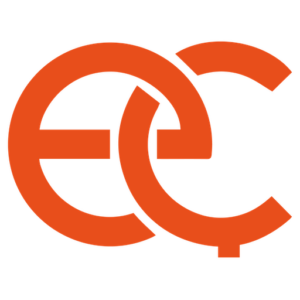The spine, which is made up of vertebral bones, is the body’s main support. It needs to be both stable enough to keep our body upright and flexible enough to move in many directions. Our spine provides these features with the help of bones, muscles, tendons, ligaments and discs. However, it is not surprising that many people experience pain in the neck, back and lower back from time to time.
Low back pain is one of the most common musculoskeletal problems. According to the research, 4 out of every 5 people experience low back pain at least once in their lives. Low back pain can be caused by muscles, tendons, herniated discs and various structures in the spine.
What Causes Low Back Pain?
- Sitting incorrectly in a chair, poor and bad posture
- Too many repetitions of the same movement and overuse
- Pushing, pulling or lifting objects carelessly are behaviors which often lead to low back pain.
Lumbar hernias
It is one of the most common causes of low back pain. Herniated discs often occur between the L4-L5 and L5-S1 vertebrae. For more detailed information, you can read the articles we have written on L4-L5 Lumbar Hernia Symptoms and Treatment or L5-S1 Lumbar Hernia Symptoms and Treatment.
Muscle Spasms
One of the most common causes of low back pain is muscle spasms or tout bands. The deep muscles around our spine stabilize the spine and contribute to the spinal mobility. When the deep muscles in the lumbar region contract and cannot relax due to poor posture, overuse or incorrect movement, it causes low back pain. Low back pain due to muscle spasm often felt like a stabbing pain.
Increased Lordosis
Our spine is S-shaped when viewed from the side. There is a natural concovecurele in the neck and low back region called lordosis and a natural curvature in the back region called kyphosis. Increase of these natural curves may cause various problems. For example, increased curvature in the lumbar region (hyperlordosis) may lead to low back pain and various disorders. We often encounter hyperlordosis when the muscles in the lumbar region, abdominal muscles and hip muscles weaken. In addition, wearing high heels may also cause hyperlordosis.
Degeneration
Degeneration (osteoarthritis) in the joints of the lumbar vertebrae may cause low back pain when it erodes the joint cartilage. For more detailed information, you can read our article Osteoarthritis – Joint Calcification.
Injuries
Injuries caused by contact sports, accidents and falls may lead to many different problems from muscle spasms to herniated discs or fractures in vertebrae.
Pregnancy
Pregnancy may also cause back pain. During pregnancy, the amount of load on the spine increases with weight gain and the shift of the center of gravity forward. Hormonal changes during pregnancy may also cause low back pain with weight gain. For detailed information, you can read our article How Does Low Back Pain Occur During Pregnancy? How Does It Go Away?
When should you consult a doctor for low back pain?
Low back pain is usually caused by simple causes and disappear within a few days. However, the following conditions may indicate that your back pain is caused by a serious problem:
- Low back pain that does not disappear despite a few days of rest,
- Low back pain which emerged after a trauma,
- Extremely severe back pain,
- Numbness and tingling in the legs,
- Muscle weakness in the legs,
- Incontinence
These symptoms require you to see a doctor immediately. Your doctor may order various tests, X-rays, MRI or CT to diagnose the disease that is causing your back pain after examining you.
Low Back Pain Treatment
For low back pain, there is no treatment program which is suitable for everyone. The cause and treatment of each low back pain is special to individual. For this reason, you should be examined by a physical therapy rehabilitation physician who has been specialized in the treatment of low back pain. After performing the necessary tests, the physician will determine the appropriate treatment for you. This treatment may include exercise with a physiotherapist, electrotherapy, bracing, medication, injections interuentrons or surgery.
Contrary to popular belief, prolonged rest in bed is not beneficial, but rather harmful. Prolonged rest will lead to further weakening of the muscles in the lumbar region and the longer the immobility, the more fear of movement will develop. The solution is usually exercises which are planned according to the individual from the first days onwards with low intensity and no pain.
According to the cause of the pain, hot or cold applications, pain relieving electric current applications (TENS), electrical stimulation applications to strengthen the deep muscles of the lumbar region can be used to treat low back pain. Methods such as massage, manual therapy and acupuncture may also be preferred.
In case of the low back pain which does not disappear with exercise and physical therapy applications, corset use, oral drug treatments, regeneral pain treatment or surgery option may come to the agenda.
Is it possible to prevent low back pain?
Yes! Low back pain can be prevented considerably with exercises which help keeping the muscles around the spine strong and flexible. Controlling and correcting your posture, adjusting your desk and chair for proper posture, and quitting smoking if you smoke can help prevent low back pain.

